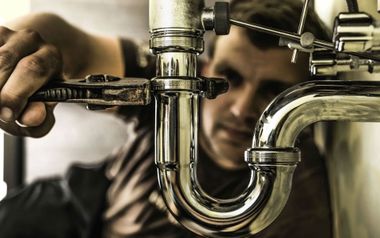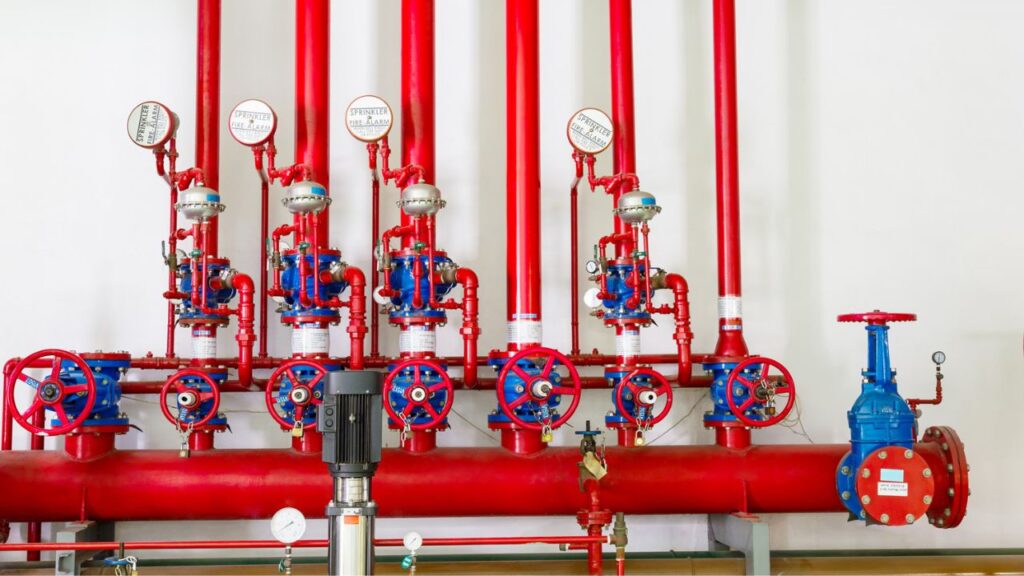Essential Parts of Your House's Plumbing System
Essential Parts of Your House's Plumbing System
Blog Article
The author is making a number of good annotation on Exploring Your Homes Plumbing Anatomy overall in this post followed below.

Understanding how your home's plumbing system functions is essential for every single homeowner. From providing clean water for alcohol consumption, cooking, and showering to safely eliminating wastewater, a properly maintained pipes system is crucial for your family's health and comfort. In this extensive overview, we'll check out the elaborate network that comprises your home's pipes and offer suggestions on upkeep, upgrades, and managing usual issues.
Introduction
Your home's pipes system is greater than simply a network of pipes; it's a complex system that guarantees you have accessibility to clean water and effective wastewater elimination. Understanding its elements and exactly how they collaborate can aid you protect against pricey repairs and guarantee everything runs smoothly.
Fundamental Parts of a Plumbing System
Pipelines and Tubes
At the heart of your pipes system are the pipelines and tubes that lug water throughout your home. These can be made of various materials such as copper, PVC, or PEX, each with its advantages in terms of toughness and cost-effectiveness.
Fixtures: Sinks, Toilets, Showers, etc.
Components like sinks, commodes, showers, and bathtubs are where water is used in your home. Understanding exactly how these fixtures link to the plumbing system assists in identifying issues and preparing upgrades.
Valves and Shut-off Points
Valves manage the flow of water in your plumbing system. Shut-off valves are important throughout emergencies or when you need to make repair work, allowing you to isolate parts of the system without disrupting water circulation to the whole residence.
Water System
Main Water Line
The main water line connects your home to the municipal water supply or a private well. It's where water enters your home and is distributed to numerous components.
Water Meter and Stress Regulator
The water meter measures your water use, while a pressure regulator ensures that water flows at a secure stress throughout your home's pipes system, avoiding damage to pipelines and components.
Cold Water vs. Hot Water Lines
Understanding the difference between cold water lines, which supply water straight from the primary, and hot water lines, which carry warmed water from the hot water heater, assists in troubleshooting and planning for upgrades.
Water drainage System
Drain Pipes Pipeline and Traps
Drain pipes bring wastewater far from sinks, showers, and bathrooms to the sewer or septic system. Catches avoid sewage system gases from entering your home and also catch debris that could create blockages.
Ventilation Pipelines
Ventilation pipes permit air right into the drainage system, protecting against suction that might slow water drainage and trigger traps to vacant. Proper air flow is vital for maintaining the honesty of your plumbing system.
Importance of Appropriate Water Drainage
Guaranteeing proper drainage protects against backups and water damages. Frequently cleansing drains and keeping traps can protect against expensive repairs and prolong the life of your pipes system.
Water Heating System
Sorts Of Hot Water Heater
Hot water heater can be tankless or traditional tank-style. Tankless heating units heat water as needed, while tanks store heated water for instant use.
Exactly How Water Heaters Attach to the Plumbing System
Recognizing just how water heaters attach to both the cold water supply and hot water distribution lines aids in diagnosing problems like insufficient hot water or leakages.
Maintenance Tips for Water Heaters
On a regular basis flushing your water heater to get rid of sediment, inspecting the temperature level settings, and checking for leakages can extend its lifespan and boost energy effectiveness.
Usual Plumbing Problems
Leakages and Their Reasons
Leaks can happen as a result of aging pipes, loosened installations, or high water pressure. Attending to leakages promptly stops water damages and mold growth.
Blockages and Clogs
Obstructions in drains and bathrooms are commonly caused by flushing non-flushable products or an accumulation of oil and hair. Making use of drain screens and bearing in mind what goes down your drains pipes can prevent blockages.
Indications of Pipes Troubles to Watch For
Low water pressure, sluggish drains pipes, foul odors, or abnormally high water costs are indicators of potential plumbing problems that ought to be attended to without delay.
Plumbing Maintenance Tips
Regular Evaluations and Checks
Arrange yearly pipes examinations to capture issues early. Look for signs of leaks, corrosion, or mineral accumulation in faucets and showerheads.
DIY Maintenance Tasks
Straightforward jobs like cleansing tap aerators, looking for commode leakages making use of color tablet computers, or shielding revealed pipelines in cool environments can stop significant pipes concerns.
When to Call a Specialist Plumbing Professional
Know when a pipes problem needs professional competence. Attempting complex repair work without proper knowledge can lead to even more damages and higher repair expenses.
Upgrading Your Plumbing System
Reasons for Updating
Updating to water-efficient components or replacing old pipes can improve water top quality, lower water expenses, and enhance the value of your home.
Modern Pipes Technologies and Their Benefits
Explore technologies like clever leak detectors, water-saving toilets, and energy-efficient hot water heater that can conserve money and reduce ecological influence.
Expense Considerations and ROI
Calculate the ahead of time expenses versus long-lasting savings when considering pipes upgrades. Several upgrades spend for themselves with reduced energy expenses and fewer fixings.
Environmental Influence and Preservation
Water-Saving Fixtures and Home Appliances
Setting up low-flow faucets, showerheads, and toilets can significantly decrease water usage without giving up performance.
Tips for Reducing Water Use
Easy habits like dealing with leaks without delay, taking much shorter showers, and running full lots of laundry and recipes can save water and reduced your utility bills.
Eco-Friendly Plumbing Options
Take into consideration sustainable pipes materials like bamboo for floor covering, which is durable and environmentally friendly, or recycled glass for counter tops.
Emergency Preparedness
Actions to Take During a Pipes Emergency
Know where your shut-off valves are located and just how to shut off the water supply in case of a ruptured pipeline or major leakage.
Value of Having Emergency Calls Helpful
Keep contact details for regional plumbers or emergency situation services conveniently offered for quick feedback during a pipes crisis.
Do It Yourself Emergency Fixes (When Relevant).
Short-term solutions like utilizing air duct tape to patch a dripping pipe or positioning a container under a trickling faucet can decrease damage until an expert plumbing technician gets here.
Final thought.
Recognizing the anatomy of your home's pipes system encourages you to maintain it effectively, saving money and time on fixings. By following routine upkeep routines and remaining informed about contemporary plumbing innovations, you can guarantee your plumbing system operates effectively for several years ahead.
Understanding Your Home Plumbing System: A Comprehensive Guide
Plumbing System: The Lifeline of Your Home
At its core, the plumbing system is designed to perform two primary functions: bring fresh water into your home and remove wastewater. The system is a network of pipes, fixtures, and other components that transport water and sewage. Residential plumbing systems include potable water supply lines, drain-waste-vent (DWV) systems, and various plumbing fixtures that make water use in daily tasks possible.
Key Components:
Water Supply: This part of your plumbing system brings municipal water into your home, passing through the main water supply line. It s responsible for supplying all water needs, from drinking to bathing.
Drainage System: It carries waste and water away from your home to the sewer or septic system. This system includes all the piping within your home that leads to external sewage or septic systems.
Vent System: An essential yet often overlooked component, the vent system allows sewer gases to escape and lets air into the drainpipes, ensuring water and waste move correctly through the system.
Fixture: More Than Just Taps and Toilets
Plumbing fixtures are the most interactive parts of the plumbing system, including faucets, showers, toilets, and sinks. Each fixture is connected to the plumbing system and plays a role in either the delivery of freshwater or the disposal of waste and wastewater.
Types of Fixtures:
Faucets and Sinks: Used for washing hands, dishes, and other daily water needs.
Toilets: Dispose of human waste through the sewage system.
Bathtubs and Showers: Provide bathing facilities, requiring both hot and cold water supply.
Water Supply: The Source of Life
The water supply system is a critical component, ensuring that potable water is available throughout your home for various uses, including drinking, cooking, and cleaning. This system consists of pipes that distribute water to different parts of the house, controlled by valves to regulate the water flow.
Types of Plumbing: Materials and Methods
Various types of plumbing systems and materials are used in residential settings, each with its advantages and applications. From copper and PVC pipes for water supply to cast iron and ABS for drainage, the choice of materials can impact the longevity and efficiency of your plumbing system.
https://intownplumbingtx.com/articles/home-plumbing-system-guide/

Understanding Your Home Plumbing System: A Comprehensive Guide
Plumbing System: The Lifeline of Your Home
At its core, the plumbing system is designed to perform two primary functions: bring fresh water into your home and remove wastewater. The system is a network of pipes, fixtures, and other components that transport water and sewage. Residential plumbing systems include potable water supply lines, drain-waste-vent (DWV) systems, and various plumbing fixtures that make water use in daily tasks possible.
Key Components:
Water Supply: This part of your plumbing system brings municipal water into your home, passing through the main water supply line. It s responsible for supplying all water needs, from drinking to bathing.
Drainage System: It carries waste and water away from your home to the sewer or septic system. This system includes all the piping within your home that leads to external sewage or septic systems.
Vent System: An essential yet often overlooked component, the vent system allows sewer gases to escape and lets air into the drainpipes, ensuring water and waste move correctly through the system.
Fixture: More Than Just Taps and Toilets
Plumbing fixtures are the most interactive parts of the plumbing system, including faucets, showers, toilets, and sinks. Each fixture is connected to the plumbing system and plays a role in either the delivery of freshwater or the disposal of waste and wastewater.
Types of Fixtures:
Water Supply: The Source of Life
The water supply system is a critical component, ensuring that potable water is available throughout your home for various uses, including drinking, cooking, and cleaning. This system consists of pipes that distribute water to different parts of the house, controlled by valves to regulate the water flow.
Types of Plumbing: Materials and Methods
Various types of plumbing systems and materials are used in residential settings, each with its advantages and applications. From copper and PVC pipes for water supply to cast iron and ABS for drainage, the choice of materials can impact the longevity and efficiency of your plumbing system.
https://intownplumbingtx.com/articles/home-plumbing-system-guide/
Do you appreciate reading up on The Inner Workings of Your Home's Plumbing? Leave feedback down below. We will be happy to hear your thoughts about this article. We are looking forward to see you back again in the near future. In case you enjoyed reading our blog post kindly do not forget to pass it around. Thanks for your time. Revisit us soon.
Make An Appointment Report this page